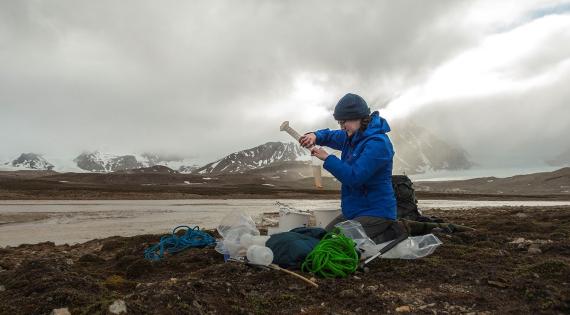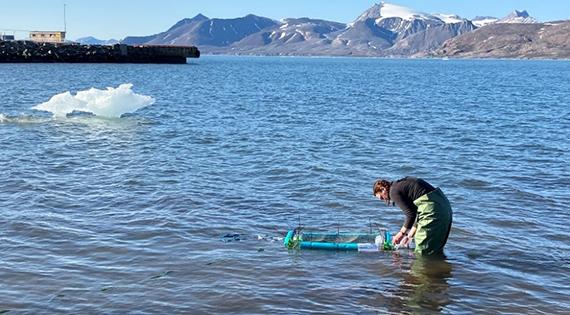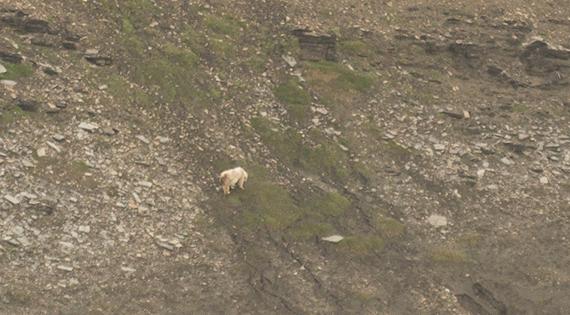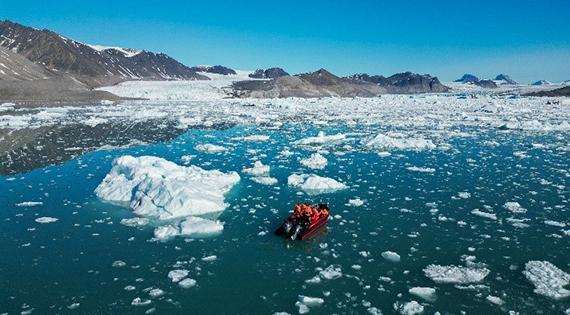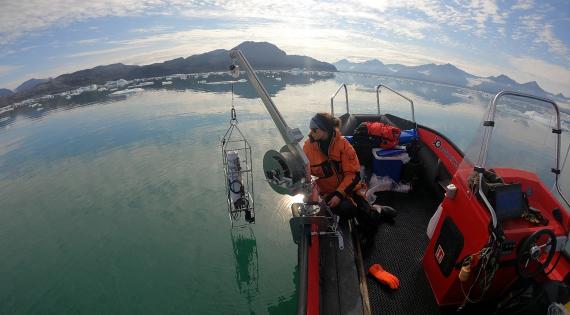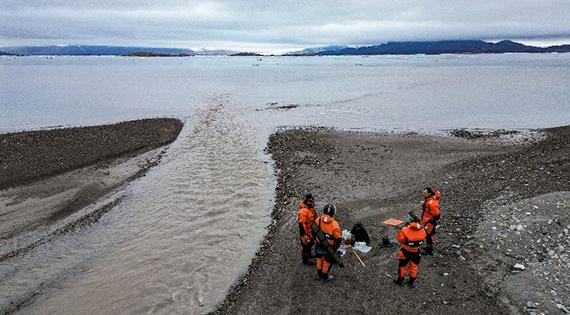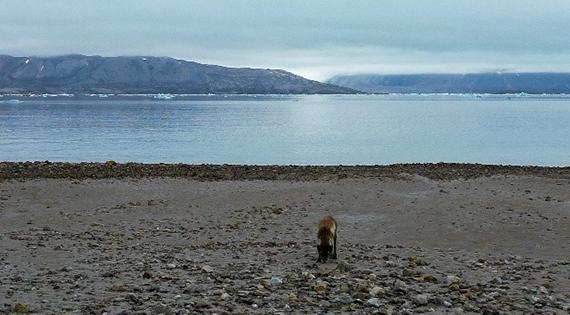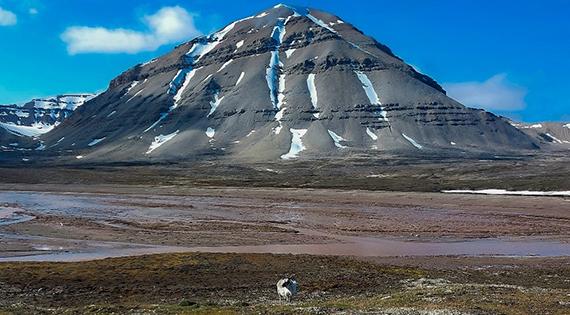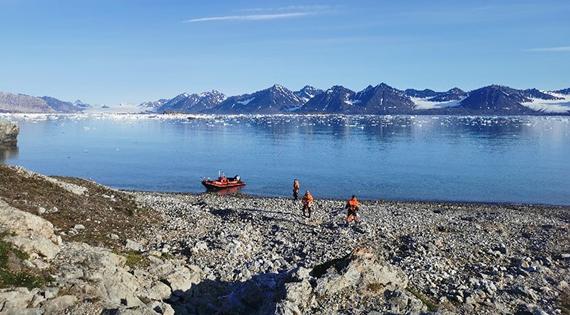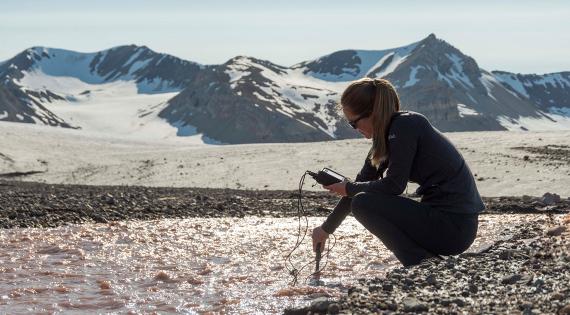In the second of our blog post series detailing fieldwork in the Arctic in summer 2023, UKCEH's Alex O’Brien explains more about efforts to understand algal communities in the Arctic. Plus, Alanna Grant describes a visit by the Poet Laureate, Simon Armitage...
The abundance and growth rates of algae communities in the Arctic are not well known. In July 2023, we undertook a series of in-river experiments during our visit to Svalbard for the BIOPOLE programme.
Our floating basket experiment
We used floating baskets to determine the growth rates of river algae within their natural growing conditions. At each chosen site, a floating basket was set up containing samples of river water and associated algae within bags made from semi-permeable membrane tubing. The algae are trapped within these bags, but nutrients can diffuse into the bag from surrounding river water.
As the algae grow and take up nutrients within the bag, fresh nutrients from the river water diffuse across the membrane, maintaining constant water quality conditions.
In total, we successfully deployed four baskets in rivers flowing into the Kongsfjord, two glacial meltwater streams and two non-glacial. We anchored a fifth basket in the fjord itself to assess the growth rates of marine algae, and to determine how river algae entering the fjord would grow in higher salinities.
To keep the baskets in place in the fast-flowing rivers around Ny Ålesund, we had to be creative. Our methods included pinning them to the underlying sediment and setting up rock anchors in tarpaulin sheets to prevent them from being washed away.
After nine days, we collected the baskets and brought them back to the lab at the UK Arctic Research Station. Here we removed the bags and sampled for algal flow cytometry and chlorophyll analyses, to determine how the algal communities within the river had increased and changed in community composition.
Setting up these experimental baskets in Arctic rivers provided a unique challenge, far removed from our regular work in British rivers. But it will give us greater insights into algal activity in the rivers of Svalbard. We couldn't have done it without the help of Chris, Iain, Alanna, and Nathan in the field helping to cycle the baskets and algae from site to site and back again.
Alex O'Brien

